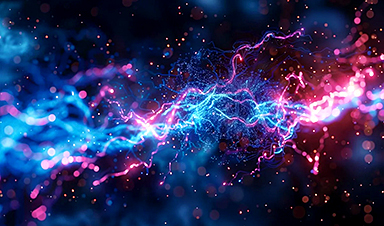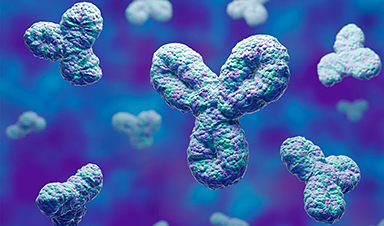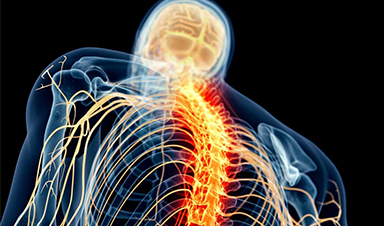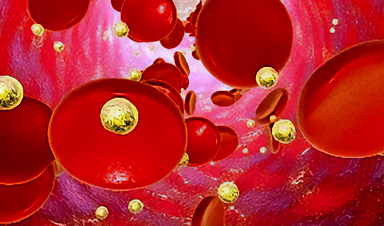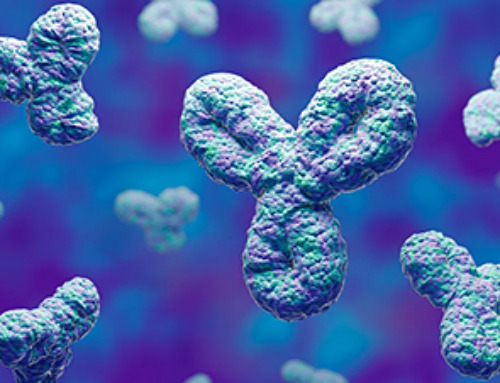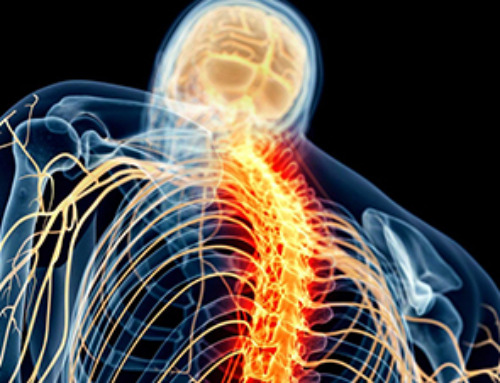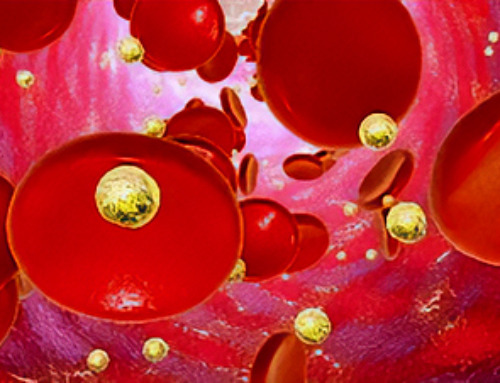ISTA physicists demonstrate that contact electrification depends on the contact history of materials.
For centuries, static electricity has intrigued and perplexed scientists. Now, researchers from the Waitukaitis group at the Institute of Science and Technology Austria (ISTA) have uncovered a crucial clue to this enduring mystery: the contact history of materials determines how they exchange charge. Their groundbreaking findings, now published in Nature, shed light on the longstanding unpredictability of contact electrification, revealing order in what was once thought to be chaos.
From the tiny jolt of touching a doorknob to styrofoam peanuts clinging to a mischievous cat’s fur, static electricity—both familiar and seemingly simple—has puzzled people since antiquity. How can this ubiquitous effect, often demonstrated to awestruck children by rubbing a balloon on their hair, still not be fully understood by scientists?
Static electricity is known by many names, but scientists prefer the term contact electrification. Contrary to what “static electricity” suggests, the phenomenon is not truly static; rather, it involves movement, as charge transfers whenever two electrically neutral materials come into contact.

“There is no escaping contact electrification; everyone experiences it. That’s why it might come off as a surprise to us that we don’t understand how exactly it happens,” says Scott Waitukaitis, Assistant Professor at the Institute of Science and Technology Austria (ISTA) who led this work together with ISTA PhD student Juan Carlos Sobarzo.
Now, the team has uncovered a key piece of the puzzle that had remained unknown for centuries: “We tested different parameters that might affect contact electrification, but none of them could soundly explain our results. That’s where we stopped to think: what if it’s contact itself that’s affecting the charging behavior? The word ‘contact’ is already in the name, yet it has been widely overlooked,” says Sobarzo.

“A total mess”
Despite the phenomenon’s ubiquity, understanding how different materials undergo contact electrification has eluded physicists and chemists for centuries. While scientists were able to describe the mechanism for metals in the 1950s, electrical insulators have proven trickier to understand—although they are the materials that exchange charge the most.
Historically, several studies have suggested that insulators could be ordered based on the sign of charge they exchange, from the most positive to the most negative. For instance, if glass charges positively to ceramic and ceramic does the same to wood, then glass (usually) charges positively to wood. Thus, glass, ceramic, and wood would form a so-called “triboelectric series.”
The problem with these triboelectric series, according to Waitukaitis, is that different researchers get different orderings, and sometimes even the same researcher does not get the same order twice when they redo their own experiment.
a total mess for a very long time: The experiments are wildly unpredictable and can sometimes seem completely random,” he says. In light of this “total mess,” physicists and material scientists could not seem to agree on any model to explain the mechanism. To make matters worse, they had to cope with the troubling fact that even identical materials, such as two balloons, exchanged charge. After all, the materials are supposed to be the same, so what determines where the charge goes?
Order arising from chaos
Waitukaitis and Sobarzo wagered that this “same-material” contact electrification could hold the keys to understanding the effect more broadly. By working with “identical” materials, they reduced the number of free variables to a minimum—they just had to find the one thing that made samples different. For their material, they chose polydimethylsiloxane (PDMS)—a clear silicone-based polymer out of which they made plastic-like blocks.
At this point, the leading hypothesis for why identical materials exchanged charge was random variations of surface properties. Frustratingly, the team’s initial results also reflected randomness and unpredictability. Not yet suspecting the samples’ contact history to play a role, they had been testing various conditions, sometimes using the same samples, completely unaware that these were evolving with each additional contact. Exploring where to take the research, they thought of testing whether identical PDMS samples would order into a triboelectric series.
“I took a set of samples I had at hand—back then I would reuse them for multiple experiments—and to my disbelief, I saw that they ordered in a series on the first try,” says Sobarzo.
Excited by this unexpected result, the team attempted to repeat the experiment with fresh samples but were quickly disappointed to see random results again.
“At this point, we could’ve thrown in the towel,” says Sobarzo. “However, I decided to try again with this same set of samples the next day. The results looked better, so I kept trying until at the fifth try the samples ordered into a perfect series.” Sobarzo had just stumbled upon the answer to why the old samples worked on the first try. Repeated contact somehow allowed the samples to evolve. “As soon as we started keeping track of the samples’ contact history, the randomness and chaos actually made perfect sense,” says Waitukaitis.

Indeed, the team found that the samples started behaving predictably after around 200 contacts and that the more ‘contacted’ sample consistently charged negatively to the one with the lower contact history. The researchers even showed that the PDMS samples could reliably form a ‘pre-designed’ triboelectric series if the number of contacts and the order of experiments were controlled.
A smoother surface
The idea that a sample’s contact history could control the way it charges had never been proposed. With this, the team explains why so many contact electrification experiments appear random and uncontrollable. Yet a question remains—how does the act of contact change the samples? So, the team pushed further, using various surface-sensitive techniques on samples before and after contact.
Among all the parameters they investigated, only one provided any hint at all: they spotted discrete changes in the materials’ surface roughness at the nanoscopic scale. More concretely, they showed that contacts smoothed the tiniest bumps on a material’s surface. How this causes contact electrification the team does not know, but as it is the only change they could detect, it is highly suggestive.
“We managed to reveal a big clue to an elusive mechanism that is so fundamental to our understanding of electricity and electrostatics and yet kept scientists puzzled for so long,” says Sobarzo. Waitukaitis concludes, barely able to hide his excitement, “We showed that the science of static electricity is not so hopeless anymore.”
Reference: “Spontaneous ordering of identical materials into a triboelectric series” by Juan Carlos Sobarzo, Felix Pertl, Daniel M. Balazs, Tommaso Costanzo, Markus Sauer, Annette Foelske, Markus Ostermann, Christian M. Pichler, Yongkang Wang, Yuki Nagata, Mischa Bonn and Scott Waitukaitis, 19 February 2025, Nature.
DOI: 10.1038/s41586-024-08530-6
This project was supported by funding from the European Research Council (ERC) Grant Agreement number 949120 under the European Union’s Horizon 2020 research and innovation program, the FFG project ‘ELSA’ under grant number 884672 as well as the European Regional Development Fund and the federal state of Lower Austria under grant number WST3-F-542638/004-2021.
News
Specially engineered antibody delivers RNA therapy to treatment-resistant tumors
Elias Quijano, PhD; Diana Martinez-Saucedo, PhD; Zaira Ianniello, PhD; and Natasha Pinto-Medici, PhD, there are 25 other contributors, most from Yale's Department of Therapeutic Radiology and from the departments of genetics, molecular biophysics and [...]
Vaccinated women face fewer cervical cancer risks
New data from Denmark shows the HPV vaccine’s powerful long-term impact, while also revealing why cervical cancer screening is still essential. A Danish study published in the journal Eurosurveillance reports that women who received the human [...]
3D-printed implant offers a potential new route to repair spinal cord injuries
A research team at RCSI University of Medicine and Health Sciences has developed a 3-D printed implant to deliver electrical stimulation to injured areas of the spinal cord, offering a potential new route to [...]
Nanocrystals Carrying Radioisotopes Offer New Hope for Cancer Treatment
The Science Scientists have developed tiny nanocrystal particles made up of isotopes of the elements lanthanum, vanadium, and oxygen for use in treating cancer. These crystals are smaller than many microbes and can carry isotopes of [...]
New Once-a-Week Shot Promises Life-Changing Relief for Parkinson’s Patients
A once-a-week shot from Australian scientists could spare people with Parkinson’s the grind of taking pills several times a day. The tiny, biodegradable gel sits under the skin and releases steady doses of two [...]
Weekly injectable drug offers hope for Parkinson’s patients
A new weekly injectable drug could transform the lives of more than eight million people living with Parkinson's disease, potentially replacing the need for multiple daily tablets. Scientists from the University of South Australia [...]
Most Plastic in the Ocean Is Invisible—And Deadly
Nanoplastics—particles smaller than a human hair—can pass through cell walls and enter the food web. New research suggest 27 million metric tons of nanoplastics are spread across just the top layer of the North [...]
Repurposed drugs could calm the immune system’s response to nanomedicine
An international study led by researchers at the University of Colorado Anschutz Medical Campus has identified a promising strategy to enhance the safety of nanomedicines, advanced therapies often used in cancer and vaccine treatments, [...]
Nano-Enhanced Hydrogel Strategies for Cartilage Repair
A recent article in Engineering describes the development of a protein-based nanocomposite hydrogel designed to deliver two therapeutic agents—dexamethasone (Dex) and kartogenin (KGN)—to support cartilage repair. The hydrogel is engineered to modulate immune responses and promote [...]
New Cancer Drug Blocks Tumors Without Debilitating Side Effects
A new drug targets RAS-PI3Kα pathways without harmful side effects. It was developed using high-performance computing and AI. A new cancer drug candidate, developed through a collaboration between Lawrence Livermore National Laboratory (LLNL), BridgeBio Oncology [...]
Scientists Are Pretty Close to Replicating the First Thing That Ever Lived
For 400 million years, a leading hypothesis claims, Earth was an “RNA World,” meaning that life must’ve first replicated from RNA before the arrival of proteins and DNA. Unfortunately, scientists have failed to find [...]
Why ‘Peniaphobia’ Is Exploding Among Young People (And Why We Should Be Concerned)
An insidious illness is taking hold among a growing proportion of young people. Little known to the general public, peniaphobia—the fear of becoming poor—is gaining ground among teens and young adults. Discover the causes [...]
Team finds flawed data in recent study relevant to coronavirus antiviral development
The COVID pandemic illustrated how urgently we need antiviral medications capable of treating coronavirus infections. To aid this effort, researchers quickly homed in on part of SARS-CoV-2's molecular structure known as the NiRAN domain—an [...]
Drug-Coated Neural Implants Reduce Immune Rejection
Summary: A new study shows that coating neural prosthetic implants with the anti-inflammatory drug dexamethasone helps reduce the body’s immune response and scar tissue formation. This strategy enhances the long-term performance and stability of electrodes [...]
Scientists discover cancer-fighting bacteria that ‘soak up’ forever chemicals in the body
A family of healthy bacteria may help 'soak up' toxic forever chemicals in the body, warding off their cancerous effects. Forever chemicals, also known as PFAS (per- and polyfluoroalkyl substances), are toxic chemicals that [...]
Johns Hopkins Researchers Uncover a New Way To Kill Cancer Cells
A new study reveals that blocking ribosomal RNA production rewires cancer cell behavior and could help treat genetically unstable tumors. Researchers at the Johns Hopkins Kimmel Cancer Center and the Department of Radiation Oncology and Molecular [...]
